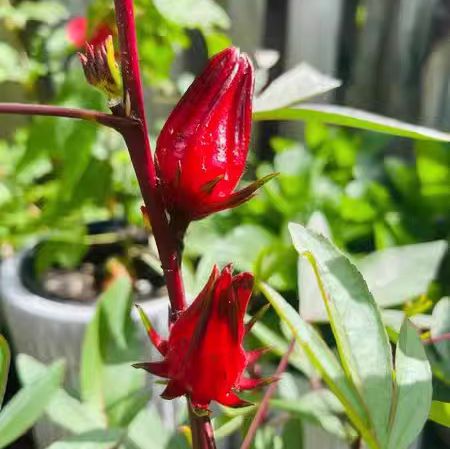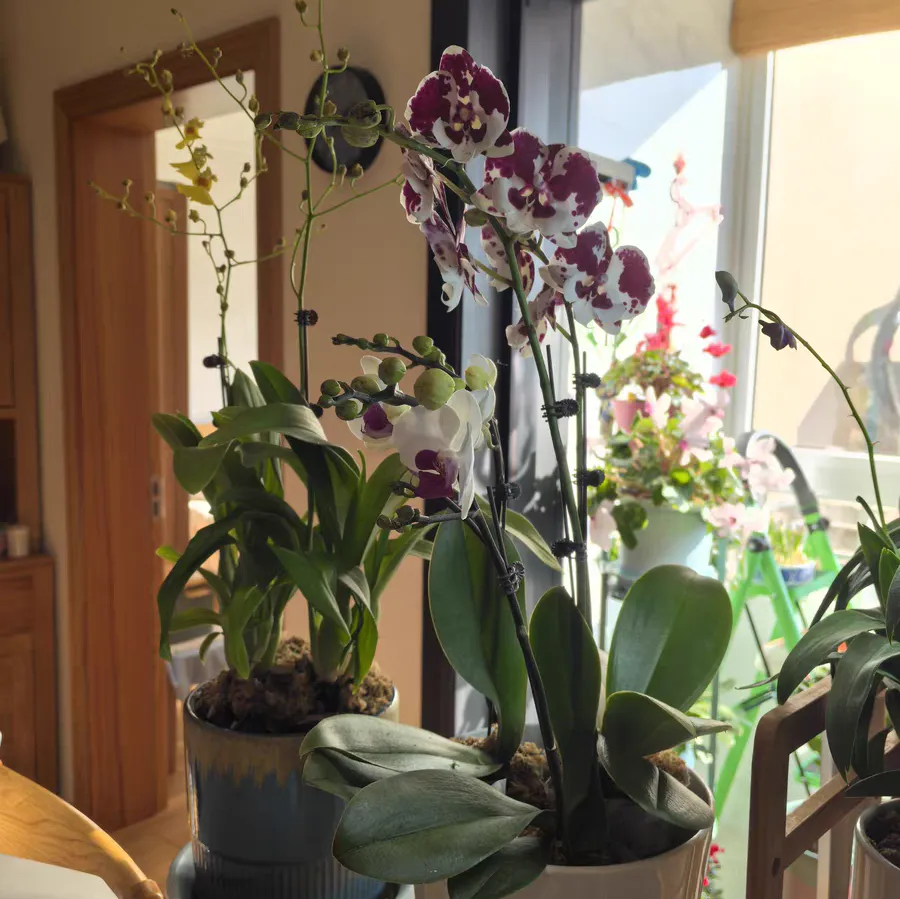Roselle, also known as Hibiscus sabdariffa. Its plant is tall and can usually grow to 1 to 2 meters. The flowers are purplish-red and extremely bright. The petals are in a unique triangular shape and the flower shape is unique. The calyx is fleshy and cup-shaped, with a dark red color. It is a high-quality material for making flower tea.
Roselle, which is native to tropical and subtropical regions, has certain requirements for the growth environment. It loves warm and sunny places and can thrive in such an environment. Although it does not have high requirements for soil, in fertile and well-drained soil, its growth state will be better and it can show more vigorous vitality and a more beautiful posture.
As the common calyx of Hibiscus sabdariffa in the Malvaceae family, roselle also has various effects and functions. At the same time, some points need to be paid attention to in its potted planting and maintenance.
I. Efficacy and functions
1. Beauty and skin care: Contains antioxidants, can remove free radicals, delay aging, promote skin metabolism, make the skin smooth and delicate, and whiten and beautify the face.
2. Lower blood pressure: The hibiscus acid component reduces the levels of total cholesterol and triglycerides in the blood and is suitable for people with high blood pressure to drink.
3. Aid digestion: Organic acids promote the secretion of saliva and gastric juice, enhance gastrointestinal peristalsis, help digestion, and are suitable for people with indigestion and loss of appetite.
4. Clear away heat and relieve summer heat: It is cool in nature, clears away heat and detoxifies. Drinking it in summer can eliminate summer heat and relieve symptoms such as dry mouth, dry tongue, and sore throat. It also has effects such as diuresis, relieving cough, promoting blood circulation and enriching blood.
II. Potted planting methods
1. Potting soil selection: Choose a breathable and well-drained flower pot, and a loose, fertile, and organic-rich sandy soil. You can mix and prepare leaf mold soil, river sand, and vermiculite.
2. Sowing or cutting: Soak the seeds before sowing to promote germination, or use healthy branches for cutting. Keep the soil moist and place it in a cool and ventilated place to take root.
3. Light and temperature: Like sufficient sunlight. The suitable growth temperature is 20°C - 30°C. Pay attention to keeping warm in winter.
4. Watering and fertilizing: It is drought-tolerant, but during the growth period, the soil needs to be kept moist, and thin organic fertilizer should be applied regularly.
III. Maintenance precautions
1. Keep warm in cold weather: It is not cold-resistant. Take warm-keeping measures in winter.
2. Water in moderation: Avoid waterlogging. Water when there are cracks in the soil and make sure to water thoroughly.
3. Apply fertilizer reasonably: Pay attention to concentration and frequency. Apply nitrogen, phosphorus and potassium compound fertilizer every 15 - 20 days during the vigorous growth period.
4. Prune regularly: Cut off withered flowers and branches to keep them clean and beautiful and promote the sprouting of new branches.
5. Prevent and control pests and diseases: Take measures in time when pests and diseases are found, such as cutting off diseased roots and branches and spraying pesticides.
The efficacy and function of roselle.

Share with
Tagged in :




Leave a Reply